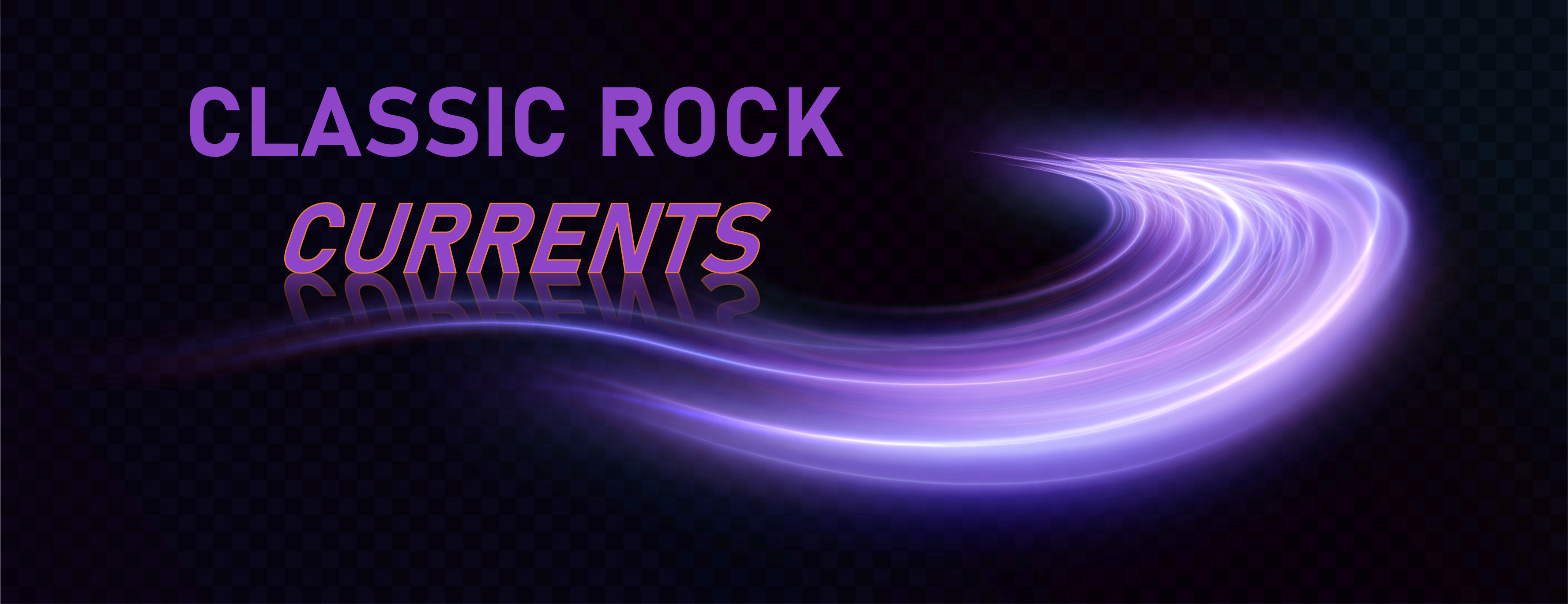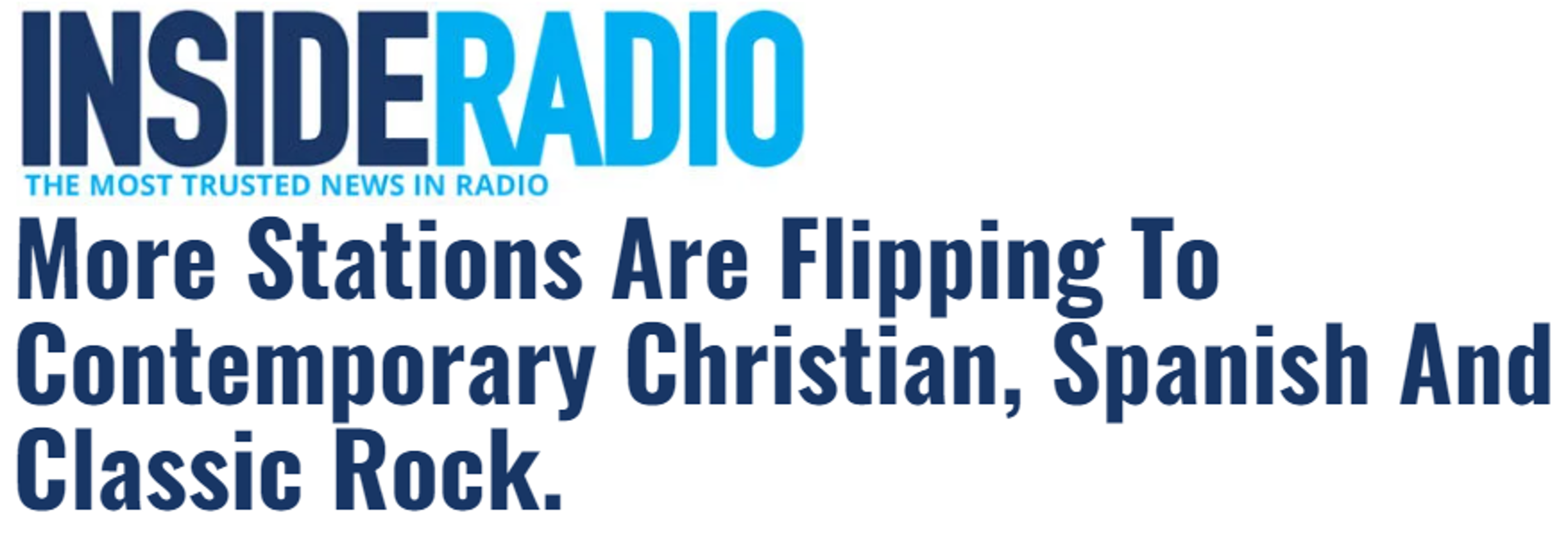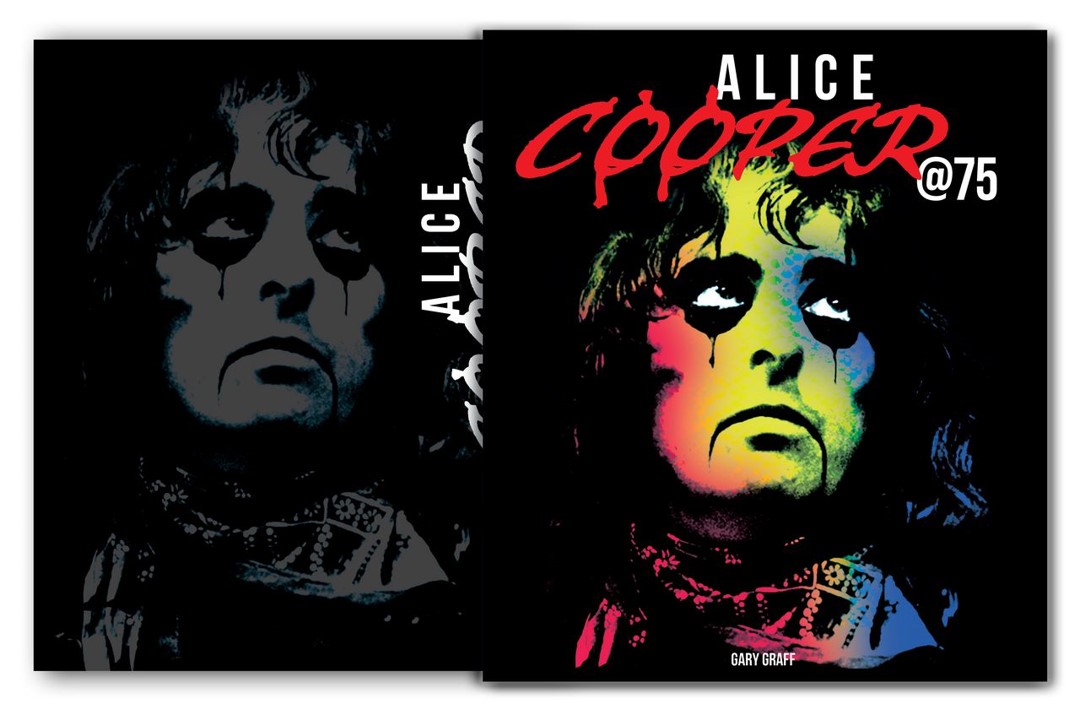
There are oxymorons. And then there are OXYMORONS.
Today’s blog post is the latter. And a fun one for me to write.
Last month marked the 18th year I’ve been writing this blog. And before I go any further, let me thank you for reading it, sharing it, and using it as a conversation piece in your company or with your network.
Not everyone is enamored with what I write, and that’s OK. One critic has told me that even though I post new content every weekday (except for holidays and that quiet period between Christmas and New Years), I’m essentially just shuffling the same 10 topics again and again.
Now I don’t want to come off a defensive, but that criticism is full of holes. Fact is, it’s more like 11 topics. And now, thanks to those fast-moving, ultra-scary, AI chat bots, I’m actually up to a dozen.
One of my go-to topics, of course, is Classic Rock, a format that’s near and dear to me. It turns out, 40 years ago, Tom Bender and I flipped the switch and an old AMer in Dallas, WFAA, became KRQX – or K-Rocks. I was fortunate to moderate a number of focus groups for the Belo team just weeks after the sign-on, a great way to quickly take the new format’s temperature. I learned a lot from that experience, and two years later, my first FM – WMMQ in Lansing – signed on, and Classic Rock took off.
So, it’s been a treat for me to guide and steer this amazing format for decades now. The industry has seen amazing resilience and consistency for a format that’s 100% gold. (A lot of furious label people screamed about Classic Rock during its first decades, worried it would hurt their new product. In retrospect, they may have had a case.) Strangely, Classic Rock has actually picked up momentum over the years. Many stations have seen their fortunes improve over time, becoming major brands in their markets.
One thing that’s surprised me is the way the Classic Rock format has fragmented over the years. First, there was Classic Hits, then Classic Rock That Really Rocks, and others. A dial scan on SiriusXM reveals other variants, including Classic Vinyl and Deep Cuts.
Oddly enough, I bet there are more cultural “current events” about Classic Rock than any other format in radio. That’s one of the ways programmers and air talent have been able to keep it fresh.
So, for this Friday’s post, I’ve got a 6-pack of Classic Rock “currents” for you that have helped keep the format humming, today and hopefully another four decades.
1. It’s growing – You’d expect to see headroom for a current-based format But Classic Rock keeps adding new stations. Last week, here was the headline in Inside Radio.

Year-over-year, Classic Rock is +11 stations, now running in a strong 8th place – ahead of Sports, Top 40, Rock, and Alternative.
Not too shabby.
A number of year ago, Classic Rock made it onto what I refer tot as the “Wheel of Formats,” a bona fide choice broadcasters have. In most markets, there’s at least one Classic Rocker. Most have two or even three.
2. Classic Rock vs. Classic Hits – What happens when you lag behind the format you spun off? It would be like “Rhoda” having better numbers than its original, “The Mary Tyler Moore Show.”

Why did Classic Hits form in the first place? Radio broadcasters were worried that advertisers would be put off by the image generated by Classic ROCK. Back in the 80’s, the term “Hits” had a more mainstream image. I had always interpreted the term “hits” as precisely why rockers were eager to get away from the overhyped sound of Top 40 radio in the first place
So, what’s been the bigger win today – Classic Rock or Classic Hits? Recently, music savant Sean Ross discussed the efficacy of both formats in 2023 in his popular “Ross on Radio” column, leaning into WAXQ in NYC, a Classic Rock station that plays Nirvana, Elton John, and Eurhythmics.
Sean makes the case that Classic Hits stations are pulling away from the core 70’s. Advantage: Classic Rock.
Of course, Classic Rockers also have skewed more 80’s (and yes, 90’s) in recent years, a departure from the music that originally put the format on the map. (More on that in my next item, a compelling video.) Meantime, both Classic Hits and Classic Rock have proven to be amazingly resilient and powerful formats, decades after their libraries were played as currents on the radio. In many markets, there are one of each, both thriving. Add those shares together and you can track the broad appeal of the music,
As always, Sean is thorough and thoughtful in his assessment, a must-read for anyone owning, managing, programming, and/or selling Classic Rock/Hits in 2023. It’s in Radio Insight and you can access it here.
3. Play the hits – Speaking of “hits,” Keith Hastings, PD of WDRV in Chicago (one of the stations Sean looked at) brought a music meme to my attention. You’ve seen these clever memes that take us on a time trip to the past, and back to our present.
In this case, it’s a dynamic look at the best selling artists and bands from late 1969 to about 2020. It’s on TikTok and it’s a mind-blower. Depending on who you are, the music you program, and the music you love, your perspectives and conclusions may differ.
But if you look at this data ride with your Rock/Classic Rock granny glasses on, you’ll see incredible music data flash before your eyes. The core Classic Rock period actually took off earlier – in the 60’s – thanks in no small part to the Beatles and the invasion of the Brits they spawned.
But even picking up the action in 1970 includes the Fab Four (well after they’d broken up), as well as Elvis who passed away in 1977. But once you get out of the 70’s and early 80’s, the appearance of bona fide rock performers grows sparse. Michael Jackson and later Madonna dominate the 80’s.
While Metallica and Bon Jovi show up, none of the Grunge acts that originated from the 90’s do, except for a quick blip by Nirvana. When Kurt Cobain died in 1994, the promise of the genre died with him. And once you reach the 2000’s, there’s a momentary spike from Linkin Park, and then crickets.
When I consulted Steve Kingston who moved from Z100 to K-Rock in New York in the 90’s, he experienced some growing pains. It was Steve’s first rodeo with Alternative. He would look at the charts, not see any Alternative bands, and ask me, “But Fred, where are the hits?”
He wasn’t used to programming music radio that wasn’t producing superstar artist and groups. And I came to understand his discomfort.
The interesting thing about this video, and today’s Classic Rock format is the realization that many PDs are pulling their stations away from the era that spawned the biggest hits. Obviously, they’re motivated by the need to stay in the money among 25-54 year-olds. But the more they move their stations away from the late 60’s and 1970’s, the more they are gravitating away from the biggest hitmakers.
4. It’s “The Midnight Special” – Here’s something to look forward to – it’s the 50th anniversary of the iconic musical TV show, “The Midnight Special.” And to celebrate, there’s lots of clips on YouTube.
If you were born before 1981, you might have missed 450 episodes of live music, featuring anybody and everybody from rock and pop music – from Paul Simon to Led Zeppelin.
Notably, the NBC show stopped production right when MTV launched, probably not a coincidence.
Loudersound calls this content a “classic rock goldmine,” and it’s hard to argue with that premise. Here’s Ike and Tina Turner doing “Nutbush City Limits” – nothing short of amazing:
OK, one more. David Bowie playing an amazing version of “Space Oddity.” At the time, the song was a just a few years old. That’s Mick Ronson right next to him.
The YouTube channel can be accessed here and it’s a wonderful rabbit hole of Classic Rock.
5. And Then There’s The Super Bowl – Rhianna wasn’t the only musical artist in the Super Bowl. Of course, she was the sole star of the Halftime Show, and her “baby bump” had morning shows talking the next day. But in reality, Rhianna shared the Super Bowl stage with lots of Classic Rockers….
….in those $7 million commercials.
Joan Jett, Ozzy Osbourne, Paul Stanley, Kenny Loggins and others were prominent players in these extravagant spots.
But as Ultimate Classic Rock points out, Elton John wins “best of show” along with rapper Jack Harlow in a Doritos ad starring a triangle. You can’t make this stuff up.
https://www.youtube.com/watch?v=Xv9qeIdJGvQ
6. Alice Cooper @ 75 – It’s amazing when a Classic Rock icon just can’t be stopped. We think of Paul McCartney, Mick Jagger, and Bruce Springsteen in that light.
But the original “shock rocker,” Alice Cooper, remains a force to be reckoned with as a septuagenarian. Between his tour and his radio show, “Nights With Alice Cooper,” now heard on more than 100 stations, including home station KSLX/Phoenix (Hubbard), Alice’s new hometown, he remains as visible as ever.
Alice actually grew up in Detroit, and last summer, played host to a Beasley managers’ meeting at the Motown Museum. Alice was as charming, funny, and witty as ever.
For his milestone birthday, he collaborated with all-star rock journalist extraordinaire, Gary Graff, on a just-released book, the appropriately titled “Alice Cooper at 75.”

In the process of writing the book, Gary spent a lot of time with Alice, of course, but also his Midwest family. Here’s his assessment to Cleveland.com:
“(Alice) is just as down to earth as somebody who’s had that level of success probably can be. And I think the real reason for that is that after he cleaned up for good, he learned how to make a separation between the Alice Cooper that gets his hand cut off and chops up baby dolls and murders people on stage from the Alice Cooper who lives the other 22 and-a-half hours a day.”
You can check out the book or better yet, buy it here.
Today’s was an easy post to write because Classic Rock continues to make new headlines every day. In fact, outside of spoken word formats like sports or news, I cannot think of another music format so rich with pop culture “current events.” That also helps the thousands of personalities on these stations fill up their breaks with new and compelling stories about the music and the special people who made it.
In the early years of the format, the “yeah, but” question always was “Will it last?”
And now decades later, the better question might be “Will it ever stop?”
This won’t be my last Classic Rock-fueled blog post. So, stay tuned for another Friday 6-pack at some point down the road.
Special thanks to Keith Hastings and Mark Edelstein.
- What To Do If Your Radio Station Goes Through A Midlife Crisis - April 25, 2025
- A 2020 Lesson?It Could All Be Gone In A Flash - April 24, 2025
- How AI Can Give Radio Personalities More…PERSONALITY - April 23, 2025




Your honor, the defense rests.
You’re the best Classic Rock “defense lawyer” in town, Scott.
Ha, not sure I trust that guy who railed about your supposed repeated content– does he not understand the power of repetition in our medium? Guarantee that guy isn’t spinning his powers enough. 😉
True that, but I would be happy to refund his money. 🙂
And then there are hybrids like me, whose Classic Hits format The Eighties Channel goes a little deeper into the crossover Rock hits than many CH stations. (Don Davis, who owns my “flagship station” KRKE in Albuquerque, says that is what sets us apart and becomes a selling point for his AEs.)
So yeah … I have my own affinity for the Classic Rock format, but my take on Classic Hits is significantly different from Sean’s as a result.
KM, I never would’ve imagined the format would have fragmented in so many ways back in ’83.
Me either, Fred. The 80s were the last “anything goes” decade for CHR.
Great article today Fred. When we launched The Bear in Fort Wayne in 1989 as Classic Hits, it took a couple of years for us to conclude that listeners didn’t really know what that term meant. It was really Rock and Roll Oldies until we went full blown Classic Rock in the Fall of 1991. The term was certainly still in its infancy. And thanks for the shout out for Christian radio. If you ever come up on a Classic Rock Comtemporary Christian station cluster, I’m your guy! Ha.
Don, appreciate the comment.